Archive for the ‘Child Development’ Category
R Is For Retirement
Author: utbt2 Jul 2013
Goonj is still accepting donations for Uttarakhand.
We came back from the park yesterday evening and the girls decided that they will make dinner for the family. I was asked to get bread, cream cheese and green capsicum, which I did. There was a melt down on the way home and I was wondering how the rest of the evening is going to go.
But they shut me out of the kitchen, yes, I was sent out and the door was promptly locked behind me. I lounged with a book in hand. 30 min later we were treated to cream cheese and shredded carrot sandwiches, lemonade and mushroom sandwich for R.
A very proud moment for all of us. I promptly clicked very many pictures. At the end of the meal, me being, will, me, I tired sneaking in a life lesson and I started, ‘See how hard you worked and I ate it with a smile on my face. Not just because it was tasty, but because I respect the food and your time. How would you feel if I had complained about the food and if I threw a tantrum?’ *Me looking all smug* Pat came the reply, ‘Actually the cooking did not take much time amma. It took us some time to put all our love in to it though!’
Fine… my nose went missing, but still a proud and retired mom!!!
Aksharit
Author: utbt12 Sep 2012
Aksharit is a Hindi word board game created by Madrat Labs.
For familiarity sake, let us call it the Hindi Scrabble.
It is available for purchase through Flipkart and Amazon.
Every friday is game night at home. That was before Aksharit Chotu. Now Chula and Meija have taken to it so much that they play for about 40 min, everyday, before they go to bed.
Though Tamil is our mother tongue, we end up speaking a lot of English at home. Living in Hyd, we picked Hindi as the second language. Naturally the children felt very disconnected with Hindi. Chula is the kind who needs to observe something for about 100 times before she gains the confidence that she will do a good job at it. Hindi class at school was two classes/week of spoken Hindi(total immersion, only Hindi, no English and the children truly believe that their Hindi teacher does not know even a bit of English) and two classes/week of Hindi alphabets. The child spent the first week ignoring her Hindi teachers. When she figured out that Hindi was there to stay, she didn’t want to go to school any more. She declared that she will tackle the rest of her life with grade1 knowledge.
The husband and I were looking for ways to make Hindi fun for them and Aksharit has certainly done that.
With Aksharit Chotu, you get a two sided board – a blue side(words without matras) and a pink side(words with matras). You start with the blue side because it has words without matras. There are a set of blue tiles that go with the blue side. Board has a set of words laid out in cross word pattern. The bottom part of the board has a track with consecutive numbers in increasing order. There is a START and a FINISH. Every player starts with a pawn representing them in the start position and five tiles each. If you see the letter in your kitty on the board, you place the letter on the board, in the order the letters have been written on the board. Suppose you get the last letter, of a three letter word on the board, then you cannot place the letter on the board and wait for the first two letters to be placed. As you play the game on the board there is a certain way you move your pawn from START to FINISH(this is explained clearly in the rules). The person to reach the FINISh first is the winner.
What we liked about the game was that the instructions were simple to follow, the game was a breath of fresh air, well thought out and executed and encourages children to learn language in a fun way. I would recommend/gift Aksharit to friends and family.
Check out the coverage on Hindu about the good people who created the game.
Standing Up For Our Children
Author: utbt6 Sep 2011
You have touched upon a couple of things that I have in my mind for the past six years. Let me go paragraph by paragraph. Any one else from the blog-mom-o-sphere, please participate. Comment, do a post, what ever works for you.
Chula has been fitting in a size or two bigger clothing since she was four. It is the hips that take the blame. Till I shopped in the ‘toddler’ section(US size 2 – 5) life was peachy. When I ventured in to the ‘girls’ section (US size 5 – 14) I vividly remember being alarmed. Many of the clothes were inappropriately designed. I mean who ever came with this low rise jeans idea?! Shouldn’t designers have some basic sense about hip size : crotch-to-waist length holy ratio? One moron comes up with a design that would fit stick figures and the all major departmental chains go ballistic and stock ONLY low rise hip huggers. I mean these are 5 and 6 year old children who run and climb things. I tried buying two sizes bigger and altering the length, but eventually gave up buying jeans for my children. Since 2008, all they wear are cotton pants with elastic at the hips that covers the butt crack. Yes, the clothing section is brimming, but if you are looking for non-pink, non-Disney characters, slightly loose, appropriate clothing, something that will withstand the running and climbing, something that is not a mini version of adult clothing you might as well grow you own cotton and weave your own clothes.
Do I need to write anything about swim suits? Target has decided that if you are looking for 8+ size swim suit, it has to be three piece – a mini bra, a bottom that will fit inside a match box, a small match box that is, and a shirt. Mind you, none of these three pieces of clothing solve the purpose of covering your child’s body and it costs a about $50. If not, you can buy wet suits for double the prize. Finally after three months of searching I found swim shorts(low rise of course) and swim shirt at Old Navy, that too only because Feb is the time the stores stock swim wear.
Yes, that is the trend now good people. The thinking is no more, ‘This is current fashion’/‘this is swim season’ -> let us buy a little more in case there is a demand. The selling no longer caters to the different sets of people, with different shapes of bodies, buying a variety of things. For all that talk and noise about uniqueness, the only message clothing industry gives my children is to conform. Stores sell one standard thing at one standard time and you better stock up. If they sell low rise jeans, fit your body in to it. If they sell swim suits from Feb – July, buy at that time. If you think your child might grow out of the swim suit before, what stores perceive as, the next swim season, you stock up or you don’t get any. All in the name of popular demand!
Not exactly clothes, but while on the topic, I might as well spill my angst. If you are following this blog you will know that we just moved continents. Moving two children from one country to another, for good, is not fun. I wanted to cheer the children up and the bulb in my head switched on. ‘Hey, let me buy the children their own pull along suitcases.’ Again if you don’t endorse Disney or Barbie, then your choices are practically non existent. For boys it is easy, buy a pull along suitcase with Lightning McQueen and you are done. At least that is what it looks to me as a mother of two girls. What I buy is what I endorse to my girls. I do not want to endorse Disney Princesses, Bartz, Barbie and such. I found that if I have certain principles, then I enter in to the exclusive realm and I need to shell out the money even if I am not ready. Finally this came home, with a hefty price tag, of course, the most I have ever spent on a piece of luggage and my heart bleeds a little bit every time the children pull it a little too hard.
Good teachers/guides(parents are the first teachers and guides of young children) have this philosophy, to balance out the classroom and to maintain harmony in the classroom, they pair up children with opposing qualities. It is purely trial and error and if it clicks, they compliment each other very well. Now a small diversion. Children are born with no clue what so ever about the XX and XY factor. Finally they figure out that there is a divide called girls and boys. They look in the society and look for external signs and qualities that define what is a boy and what is a girl. Unfortunately society tells that girls NEED to wear pink, wear dresses, must giggle, form sisterhood, like chocolates, must be super sensitive, swing between extreme emotions, be delicate, do art work, talk about their feelings, give up things for the greater good, be responsible, be gentle, be caring…… Back to good teachers/guides, these good adults must bear in mind that young children gravitate to pink and pretty because in their flexible minds, if they do not they are not girls. Unfortunately the adults, innocently endorse this thinking that it is a phase. Yes it is a phase, but if dealt blindly becomes a way of being, way of existence. All it takes -sensible adults to keep reassuring that sex is a biological thing and does not change no matter what. Just like good teachers, good parents must expose their children to both ‘boy stuff’ and ‘girlie stuff’.
Media, again like the departmental stores works with the sole principle of making money. Boys play rough/girls read books and do crafts -> publish more books for girls with girls as central characters and balls/blocks and video games for boys. Now come in the unsuspecting adults, who look at the choices available – ‘Make your own friendship bracelets kit with pictures of a pretty girl’, Cam Jansen, Fancy Nancy in full splendor, ‘Monopoly in pink – special girls edition with boutiques and malls instead of hotels and houses’, designer edition pink Scrabble, Uno special pink edition… and end up thinking this is what girls need and inadvertently end up feeding the loop. Whose brilliant idea is it to sell Monopoly in pink? What is this message that girls must shop and spend money at the mall while boys get to do large motor activity, running around, playing regular Monopoly and developing their spacial skills? Why define pink is for girls and then sell pink board games and giving the message that girls play with girls and boy play with boys? Who exactly dictates that boys need to be powerful and play ball while girls need to be passive aggressive and shop?
Then this unique Indian message. The MIL switches the TV on and there is a lady lecturing that, the woman’s place is behind the man and by supporting the man she can better herself. She goes on telling the story of Valluvar’s wife Vasuki who defied gravity. At a point it gets to me, the mother of two girls and I end up buying Paper Bag Princess where the Princess not only saves the goofball of a prince but also ends up calling him a bum and walks out alone. Do I want to my daughters to end up alone? No, but I feel that is much better than being a Vasuki or a dainty princess. This is exactly how aggressive feminism grows. The past six years I have heard nothing but the roles and duties girls. Come on, my child is still pooping in her diapers and you tell me, ‘It is good to have a girl child first, she will be responsible and take care of the boy who will come next’?
That is why K’s mom, it is up to us, parents to stand up for our children, so that they can be well rounded individuals, have a full life, without any hatred for the opposite sex, choose professions that they are passionate about rather than to fit the bill and be sensitive. We as parents must put thought in to what we buy and what we endorse. Rather than picking the best of the worst, we must demand quality. If we let the advertising industry and corporates dictate what we need to buy for our children, we(men and women) might as well part ways, move to Mars and Venus and live happily ever after.
Reading suggestions: CINDERELLA ATE MY DAUGHTER by PEGGY ORENSTEIN. Words can’t tell how much I enjoyed and learned from this book. Five stars and a must read for all parents, irrespective of the sex of your child.
Previously blogged
Sexualization Of Young Children
Are men really from Mars and women from Venus?
Creating Art Space For Children
Author: utbt15 Aug 2011
Part 7 of many.
Tharini, this is for you. What now seems like ages ago, I promised you that I will do a post on setting up an art space for children. Months passed and you have already created an art space for the boys….Better late than never and never to break promises….so here it goes.
Let us begin with the basic premises:
– It is the process, not the product.
– You are aware of your child’s age, capabilities and interests.
Age: Which means that your very young child will not have a sense of boundary. Provide her with a big canvas. Do not give her a 8 X 11 and expect her to create within it.
Interest: Some children do not like wet paint. It does not make them any less of an artist.
In my opinion for children age 2yrs – 6yrs, the popular art activities are play dough, cutting, pasting, crayons, wet paint, shaving cream, stamping. I have two or three variations of these in my art shelf and keep rotating them. A simple change paves way for new creative energy. Some typical things I rotate are
Playdough
Week1 – Play dough + roller and cookie cutter
Week2 – Play dough + moulds
Week3 – Playdough + extruder
Wet paint variations
Week1 – finger painting
Week2 – brushes
Week3 – spin art
Week4 – liquid water color
Regarding colors, there are philosophies about what we must give children. Montessori believes in starting with one color at a time, because the children must enjoy the process – fluidity of paint, hand eye coordination, brush control and learn their boundaries. Giving them too many colors distracts them from the process. The second step would be to give them the primary colors ONLY and let them create the secondary colors. Waldorf believes in chunky crayons in all colors and emphasizes pastels in their environment. So pick something practical that would work for you.
I knocked off the doors of a dining nook, which gave me two decent sized shelves. To organize, I picked up four file trays from IKEA. Right next to the shelves I placed our IKEA easel. Voila, our art space. Now some pictures for you.
One side printed paper, some collage material I find interesting, paper grocer bags cut and flattened, construction paper are the other supplies I have in the trays.
Good luck with your art space peeps!
I Is (not)For iPad
Author: utbt19 Jul 2011
Disclaimer
(1)It is not just iPad, but in general I am against any technology for the 0-9 age group.
(2)I am talking strictly for the 0-9 age group.
Ever since I read this, something has been brewing in my head and now I am fully convinced that technology is sensory deprivation for the 0-9 age group children.
My reasons.
(1)Young children need a warm adult human being to learn.
In 1960’s Harry Harlow, in order to study the human emotion of love, conducted a series of experiments with baby monkeys. He isolated many baby monkeys from their mother. Each of these baby monkeys were placed in a cage. The cage contained a metal mesh, roughly shaped like a mama monkey, with a milk bottle attached to it. And a similar metal mesh wrapped in soft cotton, made plush, but with no nourishment of any sort. After many days of observation, Harlow concluded that all baby monkeys clearly preferred the cloth mother to the wire mother. The baby monkey would stay with the cloth mother running quickly to the wire mother to take a quick sip of milk and run back to the cloth mother. When the cloth monkey was removed from the cage, the baby monkeys became insecure and displayed panic and aggression(screaming, crying etc), over extended period of time some monkeys even died.
This kind of an experiment cannot be conducted on real human beings and the monkeys being very close to us in terms of evolution, this is proof enough for me. Children need a warm, living, talking human being to carry, touch, attend to the needs of the child, use voice with different modulations, exhibit a myriad of emotions, have unprogrammed response in order to nurture the child.
Revolutionizing the way how young children learn, by replacing the human interaction, even if it is only a part, with technology is not my cup of tea.
(2)The first thing that forms in the womb is the brain. Then the human body develops from the center to the extremities. That is growth is from the spinal cord/brain region to the limbs and finally to the digits. When a child is born she does not know that she has hands, legs, fingers and toes. Then over the first three years the child slowly discovers, understands and starts using her extremities.
The brain forming first is by no means an indication that the brain is fully developed at the time of birth. The brain at the time of birth is more like a perfectly planned city without ANY roads. How can one live in this city if there is no way to get from point A to point B? The roads are the neural networks. We need them to transmit electrical signals, to convey information, to access information, to connect something that we learnt long back in order to address the current problem at hand.
As the child grows so does her experience. The child discovers she has hands. This is an experience. She writes this in to her brain and forms certain neural networks. The child discovers that her hands have some use, say pick up things. This is an experience. The already formed neural network is expanded or rewritten based on this new information. In a capsule, the brain is shaped and molded by the number of varied experiences a child has.
Using tech gizmo to learn her ABC or play with also an experience. But it is a one track experience, touch the screen, the next letter will be played, push this button the light will blink, pull the cord the siren will sound etc. There is no variation in the experience and there is neither scope for expansion of the network that is already formed nor any kind of rewriting of neural network that happens. Such learning is detrimental to the growing brain.
In very simple words, ‘THE MORE YOUR CHILD MOVES, THE MORE SHE LEARNS’. The way to a child’s brain is through unstructured gross motor movement and some simple fine motor movement.
(3)A machine is one size fits all and does not cater to children with difficulties perceiving certain patterns. Even a mild pattern perception problem, say for example your child is left handed instead of right handed, is not accounted for in many gizmos.
Having worked in a conventional school with traditional teaching methods, for a few months, I have seen first hand how a left hand child perceives the written letter differently. First of all we are talking about four year old children who do not get the very concept that letter is a symbolical representation of sound. Secondly we do not wait for the child’s hand muscles to develop, we expect them to write what is shown to them. Problems if any are addressed by repetition. This learning by rote rather than understanding can only go so far.
Where as children who are allowed to experience the symbol through body movements do much better. It is kind of an early intervention program, that acts on the weaker areas of the brain and strengthens it.
(4)The tech toys do not come cheap. Depending on the level of sophistication they leave a significant dent in your purse. As a generalization most of us have two children in a family. Do you buy two tech toys which means shelling out double the amount of money or do you buy one and expect the children to share?
If one truly believes that she is buying a tech toy to her child because she wants her child to learn, then by stipulating an usage time she insinuates that learning happens only during a specific time.
Okay the sharing business aside, parents expect children to sit at a place and play/learn with the gizmo without damaging the gizmo. The child cannot open the gizmo, shake it, see what makes all this sound and movement to happen. Very fair expectation from the parent considering the price of the gizmo. You are teaching this child to merely enjoy the outcome, not to bother about how the whole shebang happens. Would you rather give your child a fish a day or teach your child to fish?
Young children need to see cause and effect and must also see that a varied cause makes a different effect. When you pour dry sand, this is how it falls. When you pour wet sand this is what happens. When you pour dry sand through a funnel, how does it fall? These are the simple and the most enriching experiences young children need.
(5)I am certainly worried about the radiation levels children are exposed to. Staring at a screen is very unnatural for the eyes. Again the brain develops in accordance to the signals it receives and a child exposed to TV/Kindle/iPad/iPhone grows up with a brain that is wired to see close by objects, looses interest in things that do not come with a sound and dance effect.
(6)I recently attended a lecture by Roland Steinemann and what he said was very interesting to me. While discussing what is the motivation of a child to learn, to go to school, he said that the till age 5 the main motivation for a child to learn is is the innate skill of every human being to imitate. Then till age 9/10 children learn because they love the teacher. After 10 is the stage where they learn for satisfying their curiosity.
Going by this logic, tech toys with programmed responses, which just throw information in your face, are much suitable for the 10+ age group.
(7)I have also heard the argument that this is the age of tech and if children are not introduced early on, they will loose out. Going by this argument Zuckerberg must have grown up with social networking and Larry Page must have grown up with search engines. All a child needs is unlimited imagination, curiosity to know and analyze things, determination and will to follow through.
For your further reading pleasure
CSAAM April 2011 – C Is For Child Sexual Abuse Awareness
Author: utbt12 Apr 2011
I have been silently following CSAAM for sometime now. I went for lunch with a friend and no prizes for guessing what we talked about. I came back thinking that I must put up a post, but quickly scratched the plan within hours because I didn’t want to attract any trolls. So far I have always written about safe topics and have stayed in my comfort zone, do I really want to jeopardize it?
Today morning I read Kiran’s tweet.
This reminds me of the “they came for the Jews, I kept quiet”. All ye who kept quiet, tomorrow it could be you.
That was the decision point for me. I mean, I am a Early Child Education professional and if I hesitate to advocate for the kids and their families, then what is the use of my education?
Irrespective of one’s age, one inappropriate touch, even if it a hasty groping, is enough to open one’s eyes to the world. Suddenly the world is not a safe place any more. Even a ten year old will develop a bat sense that teaches her to steer clear of some people. This is all in retrospect, but it is very confusing when you go through it and you are only ten years old and are not equipped with a good support system. I remember thinking hard about this negative attention but for the life of me couldn’t figure out why. The only explanation I could come up with was my non-existent breasts and the potential of what they can develop in to. I also came up with ingenious solution of wearing baggy clothes and molding my spine in to a convex shape that would give Manthara a tough competition!
I have been subjected to an occasional groping in public transportation, exposure to inappropriate language and despicable behaviors of a few individuals while in college. As difficult as it was to deal with it at that time, I must count my blessings. When it comes to my children, how do I deal with it? Gamble on luck? I wish I can put them in a bubble. But that ain’t happening. I cannot look in to those wide, innocent eyes and say that there are big bad wolves out there and they can potentially be affected by them. I just finished teaching them about widening their circle of trust and letting on people other than me in to this circle. Do I want to give them mixed messages? Though the girls already know certain aspects of appropriate and inappropriate touch, I had been afraid to go any further with this.
Thanks to CSAAM, I have been thinking about this topic for the past month. I am trying to remove the emotional ‘parent’ aspect from this equation and approach it as I would any lesson plan and I must say that helps. With this in mind, I have split what I want to do in to two categories – objectives and goals. Objectives are very concrete set of achievables which come with a definite time frame. Goals are something that we walk towards and at times we find this expanding and elusive.
Goals:
#1 Create awareness.
#2 Giving the child the right to say no.
#3 Teaching the children that they have full control over their bodies.
#4 Keeping the line of communication open.
#5 Let them know that they are special no matter what.
Objectives:
If you have a set of goals in your mind, small opportunities present themselves and these can be turned in to objectives. Otherwise, introduce the topic through a book with good content that targets your goals.
-For quite sometime now, Mieja has been pestering me how baby comes out of a mommy’s body, for which my typical answer has been, ‘When it is time the doctor will help the baby come out of mommy’s tummy’. Three weeks back, Mieja refused to take the template answer and forced me it to a corner asking me, ‘Amma, I have heard this million times. Tell me the body part the baby comes out of.’ So I told her the name of the appropriate body part. This to me is one of the goals that keeps in line with goal #3 – Teaching the children that they have full control over their bodies, which includes every body part has a name and a related function.
Over the three weeks at multiple instances I have followed up on this conversation, stressing that it is the name of a body part and is not something to be giggled over/used as a joke; the need for hygiene; every part of the body has a certain functionality including private parts and the children need to define boundaries for every body part. For example – It is okay to hold hands, not okay to touch some one’s eyes, okay to ask for permission and give a hug, not okay to touch private parts. By holding hands and hugging you tell a person about love and trust. By touching some one’s eyes, you can potentially harm their eyes. When it comes to private parts it is inactive currently and all they need to worry about is hygiene.
-Indian culture is one that expects compliance, especially from children. So when your child says no, stop and listen to it. If possible help the child to give a reason why they are saying no. When one blindly discounts every no a child says, the child is going to grow up thinking that they do not have the power to say no. This addresses goal #2.
This is a constant struggle for me. Expecting compliance from my children has been written in to my DNA owing to the way I was raised. So I have to really practice to count to ten to keep my reflexes under control.
-Post 6 years of age, all children experiment with lying. The intention is totally harmless. A simple, ‘Yes, I washed my hands already’ is not meant to make a fool out of you, but to move on with the next exciting thing. Stamp out the urge to make a lesson out of the situation. A simple and quite, ‘I can find out if you washed your hands or not. Please tell me the truth. If you are in a hurry to go out and play bubbles, I will ask your sister to wait for you.’ will do wonders in the long run. goal #4.
What would I recommend a friend to read?
Of course the whole website, but in particular
– Awareness about cyber sexual abuse
M Is For Montessori
Author: utbt28 Mar 2011
Montessori is a philosophy. I consider it as a ‘way of life’ as opposed to ‘alternate schooling method’.
Magic number in Montessori – 3.
- Montessori believes that children’s development is in stages of three. 0-3 is the infant/toddler stage or the unconscious absorbent mind, 3-6 is the conscious absorbent mind. The 6-9(lower elementary) and 9-12(upper elementary) phases in a Montessori elementary focuses on helping children organize his/her thoughts internally. It is considered the period for social development and evolving a sense of justice.
- Even the lessons that are taught to children are taught in a format called ‘three period lessons’. The first period is the teacher introducing the child to the work. The second period is the teacher assessing how much the child retained from the first period and how much the child recognizes the elements of the lesson. During the third period the child is encouraged to do the lesson by herself, recalling all the elements and the vocabulary. If desired results are achieved, the lesson is considered complete. From this point onwards the child can repeat the work as and when desired.
- In the very core, Montessori regards a human brain to have three components – reptilian, mammalian and evolved. This is true to all human beings. What we exhibit is a complicated interplay of all these three tendencies.
- Shelves that are partitioned in to three levels with three objects/work displayed in each level.
Mixed age classrooms. Younger children and older children working together is a typical trait of a Montessori classroom.
Montessori classroom, often called as an environment, is divided in to practical life area, sensorial area, language area, cultural area and math area. In practical life children learn things like pouring from one cup to another, the hand control and hand-eye coordination learnt from this process is later applied to writing. Every area is interlinked. Though a typical Montessori classroom is a big hall with 50 – 55 children of mixed age, the children magically segregate themselves in to age appropriate areas. Younger children are almost always found in the practical life area, the older children in the math area and such.
Motto behind the Montessori environment is ‘everything has a place and everything in its place’. Same applies for children and teachers in the environment. The teacher’s place – to observe and to guide. The children find their own place in the environment. Coming in to a Montessori environment the children are taught by modeling – by both the adults and the other children in the environment. The new child finds where she fits in this well organized environment and slowly grows from a novice to a leader.
Montessori considers 0-6 years of age as a unique window. It is known as ‘sensitive period’. Through her environment, the child is forming experiences which play a major role in how the neural networks are formed in the brain. By four these neural networks are precipitating and it becomes increasing difficult to rewrite the neural patterns. That is why many Montessori schools have an age limit after which they do not take non-Montessori children in to their environment.
Montessori places great deal of respect on sense of order, which is innate in a child. The first three years, all the child does is to make sense of the world and create order within herself. Sense of order in simple words can be explained as ‘where everything goes and when everything happens’. Though she cannot tell time, the child has a concept of time. Example, nap after lunch, dinner after going to the park, read books before bed etc. When the environment is predictable – few things, each in its place, well displayed, the child is more confident in the environment. Care must be taken to respect the child’s sense of order.
Many steps exist in a work and this is called cycle of work. If the child wants to paint, the cycle is -> get the apron on -> get paper -> pick paint -> paint -> place art work on drying shelf -> get water in a pail/container to clean easel -> dry the easel with a towel -> dump dirty water -> dry the container -> place all material in respective places (used towel in laundry basket, hang apron on peg, used paint cup and brushes in the sink). Every adult unfamiliar with Montessori to whom I have explained this cycle, have expressed doubts like , ‘this is too restrictive/child will feel burdened/are you for real?/this will never work’ etc. But I have seen 18 month – two year old children who do this without missing a beat. The main thing to recognize is that the doubt lies not within the child, but within the adult. The adult’s contribution to make sure that the child progresses successively without breaking the cycle of work is, to do the work once herself, think through the steps bearing in mind the age of the child, make sure that everything is available in the right place in the environment – like the paper is trimmed to size and placed on the paper tray, paints are filled regularly, dirty paint cups/brushes are cleaned and replaced, art work drying rack is accessible, towels are filled in the hamper, sink/faucet is easily accessible. I have also heard arguments that it is too much to expect from a child. I disagree. We talk about gratification and this is how a child learns gratification. Children learn their boundaries, which is not at all negative. Not to mention they expand their mind to the thinking that a certain problem has many steps and vice versa are aware that the small steps lead to a bigger picture.
Montessori environment places high emphasis on grace and courtesy. The idea is to teach through example that every person, every object, every process needs to be respected. This simple thing has deeper spiritual meaning. I can almost draw a curriculum web based on this.
Montessori, considers everything as work and every work is done in a certain way. In a manner of speaking even play is work and children are expected to play without harming themselves or their friends.
Montessori is based on reasoning and believes that fantasy can wait till the child is six and is capable of recognizing fantasy. As I have told many times, this does not make the children deficit of imagination and creative thinking. If a child is inclined to enjoying fantasy, even if they are Montessori schooled, they grow in to adults with logically sound fantasies. My most famous argument, ‘logic can exist without fantasy, but fantasy cannot exist without logic’. As an extension of this, tech toys, the iPads, iPhone apps and such are frowned upon. Because a young child needs to recognize not just cause and effect, but also a reason for this. All tech toys do is to teach children that things happen, take it for granted and don’t ever try to open your toy and analyze why and how.
Movement is incorporated in to the process of learning. Movement molds brain development in wondrous ways.
Montessori environment is filled with non-plastic objects, earth tones, no bright over stimulating colors, wooden materials, natural fabrics and such.
Montessori is neither strict nor all play. I like to think of it as flexibility within a structure.
Many more things to say, but I leave you all with this: any philosophy is only as sound as the adult who implements it.
Gandhiji’s Birthday
Author: utbt5 Oct 2010
Gandhiji’s birthday is a big deal in our school. We start with International Peace Day on Sept 21, then we do Pennies For Peace, then we talk about Gandhiji – the peaceful warrior and end the peace/non-violence theme by celebrating United Nations Day. Our school is closed for Gandhiji’s birthday every year.
This has been our routine for the three years we have been with this school. But the girls are growing and this Oct 1st and Oct 2nd we had a lot of talk about Gandhiji at home.
Mieja’s questions:
Did a english man shooted Gandhiji?
An Indian man did? But, why Amma? Gandhiji is the father of India. Why would the ‘goat person’ kill his own dad?
Did Gandhiji die in the darkness or something? What time of the day was it?
When he was shooted, how did he fall?
Why is he dressed like that? He has no shirts? Was Gandhi poor? He had no money to buy shirts? Is that why he is naked?
Chula’s questions:
Why do you say Gandhi Jayanthi Amma?
Is it like Krishna Jayanthi? Does Jayanthi mean birthday? Chadurthi is Ganesha’s birthday too. So why are we not saying Gandhi Chadurthi?
Chula had her shower almost by herself and dressed up in a pattu pavadai. Then she came running to me and said that she was ready. When I asked her ready for what, she replied that she is ready to celebrate the jayanthi or chadurthi or whatever it is, demanded why I haven’t set up Gandhiji’s picture, decked it with flowers and wanted to know what special Gandhi food I had cooked.
I promised her we will do something special in an hour and quickly planned some art work, books, songs and special food.
The food part was the easiest – peanut sundal and milk. One more thing to love about Gandhi, it is so easy-peasy to prepare his favorite food. Chula wanted to sing Ragupathi Raghava, so we did that. We read Marching To Freedom By Pratham, (special thanks to Chox aunty for sending special books to the girls) and Dandi March is making quite an effect in Mieja’s mind. I can sense questions brewing. We also have Picture Gandhi by Tulika, The Story Of Dandi March by Tulika and Gandhi: His Life In Pictures. We thumbed through all the books.
I have to admit that I was a little lost for the art part. Then I decided to talk about how simple lines can form a drawing, profile vs front view. I showed then the famous question mark profile drawing of Gandhi, how such simple lines can be representative of Gandhi. Mieja wanted to draw and Chula wanted to write an essay. So this is what we ended up doing.
I had been wanting to introduce the liquid water colors that I had purchased a few weeks back. So I did white on white crayon resist and told them that if they paint the canvas they will discover a surprise. They were kicked when they saw Gandhi on their canvas.
They wanted to experiment on crayon resist and this is what they came up with. They can draw themselves with long hair and long curly eye lashes even when they cannot see what they were drawing. LOL!
Art Games
Author: utbt9 Aug 2010
More summer fun 2010 posts.
So what does one do with two little girls for 10 weeks?
That is 70 days. Time up and awake comes to 840 hours.
TV/PBS kids games/Wii, not that big at home. It is mainly to give myself a break. We have only one reader and one that pretends to be a reader 🙂
We did the usual playdates, block building, drawing, coloring, free play, gardening, bubble blowing, side walk chalk, easel painting, rangoli, trampoline, bubble bath, wading pool, parks, hikes, bicycle ride around the neighborhood, libraries, museums, exploratarium, cross words, puzzles, I spy, planetarium, doctor office trips(Yep, double bronchitis for the whole family including the adults in the middle of summer! Who would’ve thunked?!) botanical garden, camping trips. Still did not add up to 840 hours! No siree Bob, it did not.
And that is when I read about the ‘Simon Says’ game and thought that it would be interesting to do at home. I wanted to do shapes – one shape a day. My main goal is to talk to the girls about the different shapes and for them to look around them and see what shapes they can identify in our environment.
The first day we did circles. Red circle, blue circle, multicolored circle, red circle inside a blue circle, how many circles can you fit inside the biggest circle, draw three circles all three touching, color the smallest blue circle, color outside the green circle….the girls just went with the flow and had a ball.
The next day we did hearts. The girls quickly took over. Heart = love. I love my family. ‘Mieja look I drew you in my heart, that means I love you’, ‘I am making a flower for you’, ‘I am drawing a family in love’….. I stepped back, picked up a book and answered only when I was specifically called for.
What did we do on the third day? Duh! Triangles, of course. Mieja had difficulty making the third line straight so that it intersected the first two, while Chula was already doing the triangle things she knows – pizza, triangle maze, ice cream cone, ice cream sundae, flower with triangle petals (okay that was a far one, but whatever) etc. So I had to branch off, giving different instructions for them. Chula wanted to warli. She did one warli image, then our family in warli holding hands and dancing. When she said that she wanted to do spiral warli, I made o-o-o-o-o-o- in a spiral and she figured out how to do the triangles and how to make them hold hands. She walked around the paper, rolled around the paper, looked at angles that would put a cinematographer to shame, but she did it. Mieja wanted to do warli family and was getting upset that she couldn’t do it like her sister. After much talking that it has to be ‘her’ work and must be something ‘she’ enjoys doing, she did do a family with square and rectangle bodies. But she was happy that she made her own family.
Fourth day we must have done squares. But we took a break 🙂
Jokes And Riddles
Author: utbt1 Aug 2010
Mieja sits on her chair, holding FUNTIME RIDDLES ( by Marilyn Helmer and Jane Kurisu ) and with 150% focus reads:
What ship do prize winning athletes sail on?
Championship.
What is common to a cake and a baseball game?
They both need a good batter.
Why are basketball courts wet?
Because all the players dribble.
Why are football stadiums always cool?
Because the seats are filled with fans.
She is very calm, very composed. There are no pauses and no laughs. Because she does not understand. Heck she can’t even read! She repeats entirely from memory, from what she has recorded away in her brain by listening to what her older sister has read to her. Its hilarious to watch this child read a jokes and riddles book like some one reading SUN TV news.
BTW the riddle book is good. Do check it out.
Chula understands the jokes, I can tell. She is at a stage where she understands both slapstick as well as the subtle semantic/phonological jokes. We also picked up from the library SILLY KNOCK-KNOCKS( author Joseph Rosenbloom, illustrated by Steve Harpster ) and all of the jokes are subtle phonological ones and go right over my head, but Chula gets it. I will give you a sample:
Knock-Knock
Who’s there?
Canoe.
Canoe who?
Canoe please get off my foot?
( Ammmmaaaa… *some serious eye rolling* it is just like CAN YOU please get off my foot. Did you even think about that? *sending more attitude my way* ) For my part, I irritate her further by saying that I understand the wordplay, but what is so funny in a knock-knock joke?
Tell me folks, is it a cultural thing? I don’t get it. Probably will never, because I did not grow up with it?
PS: Recordings of Mieja “reading” books.
PPS: A riddle for you all. Who can jump taller than the tall mountain? ( Clue: If you are a Dora enthusiast or have one at home, you will know the answer. )

 (No Ratings Yet)
(No Ratings Yet)

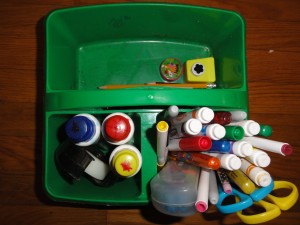
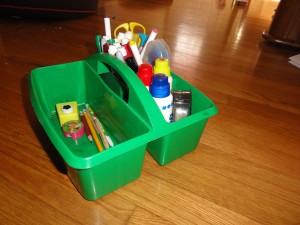
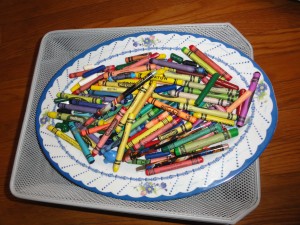
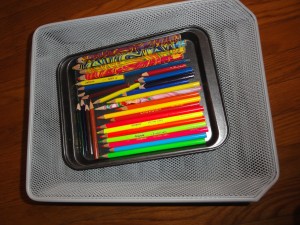
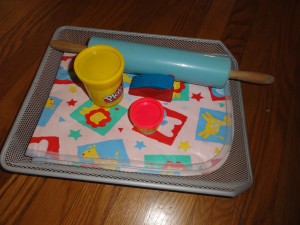
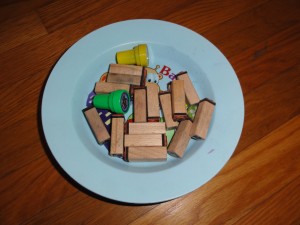

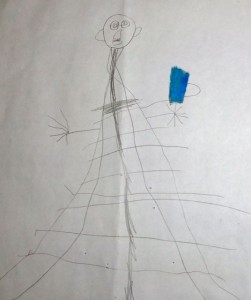
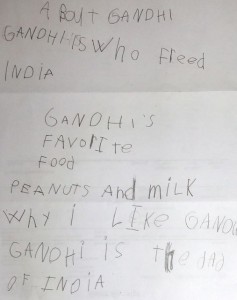
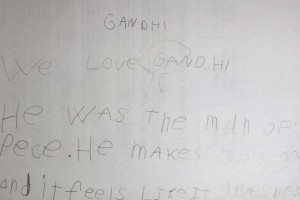

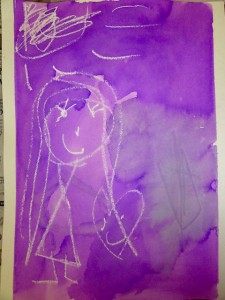
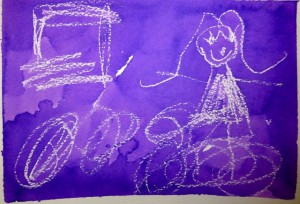






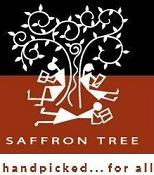
Recent Comments